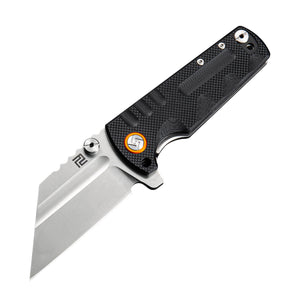When it comes to choosing a folding knife, there are two main categories to consider: tactical knives and everyday carry (EDC) knives. Each type has its own set of pros and cons, and understanding the differences between them can help you make an informed decision. In this article, we will explore the characteristics of tactical and EDC folding knives, comparing their advantages and disadvantages.
Tactical Knives
Tactical knives are designed for self-defense and military use. They are typically larger and more robust than EDC knives, with features that enhance their functionality in high-stress situations. Some key pros and cons of tactical knives include:
Pros
- Tactical knives are built to withstand heavy-duty tasks and are often made from durable materials such as stainless steel or titanium.
- They usually have a serrated edge, which makes them effective for cutting through tough materials like rope or seatbelts.
- Tactical knives often feature additional tools or features, such as glass breakers or seatbelt cutters, which can be useful in emergency situations.
Cons
- The larger size and weight of tactical knives can make them less convenient to carry on a daily basis.
- Some jurisdictions have restrictions on the length and type of blade that can be carried, which may limit the practicality of a tactical knife for everyday use.
- Tactical knives can be more expensive than EDC knives due to their specialized design and materials.
Everyday Carry (EDC) Knives
EDC knives, as the name suggests, are designed to be carried and used in everyday situations. They are typically smaller and more lightweight than tactical knives, offering a balance between functionality and convenience. Let's explore the pros and cons of EDC knives:
Pros
- EDC knives are compact and lightweight, making them easy to carry in your pocket or on a keychain.
- They are versatile tools that can be used for a variety of everyday tasks, such as opening packages or cutting fruits.
- EDC knives are generally more affordable than tactical knives, making them accessible to a wider range of users.
Cons
- Due to their smaller size, EDC knives may not be as effective for self-defense or heavy-duty tasks.
- They often have a plain edge, which may limit their cutting capabilities compared to serrated blades.
- EDC knives may not have the additional features or tools found in tactical knives, which could be a disadvantage in certain situations.
Choosing the Right Knife for You
When deciding between a tactical knife and an EDC knife, it's important to consider your specific needs and use cases. If you require a knife for self-defense or military purposes, a tactical knife may be the better choice. On the other hand, if you need a versatile tool for everyday tasks, an EDC knife would be more suitable.
It's worth noting that many knife enthusiasts own both types, using them for different purposes. Ultimately, the decision comes down to personal preference and the intended use of the knife.
Conclusion
In summary, tactical knives and EDC knives serve different purposes and have distinct pros and cons. Tactical knives excel in self-defense and heavy-duty tasks, while EDC knives offer convenience and versatility for everyday use. By understanding the characteristics of each type, you can make an informed decision and choose the right folding knife for your needs.

